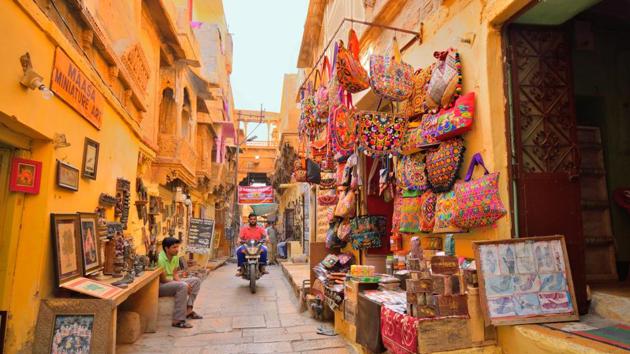Broaden the idea of a smart city in India | Opinion
To tackle the climate crisis and make cities liveable, invest in energy-efficient buildings and microclimate
On September 20, New York City (NYC)’s “iconic” buildings were lit up in green for the launch of the week-long global Climate Week NYC, which coincided with the United Nations General Assembly session. The summit was the first big one (virtual) in this Covid-19 year, and was held in the backdrop of an ongoing global conversation on the need for the world to chart a new green development path.

While globally, cities are struggling to tackle the impact of the climate crisis (with heat waves, cold waves, flash floods and cyclones among others issues), many have also become hubs of climate action. They are thinking of innovative ways to reduce temperatures and make their urban environments sustainable and liveable for their residents by designing and constructing buildings that need less energy to run and employ passive means of climate control. For example, Chicago and Toronto are building rooftop gardens; Milan is building vertical forests; and Madsar City in Abu Dhabi is building houses close to each other so that they can provide shading to public walkways, and also prioritising walking and cycling over polluting cars.
Unfortunately, the responses of India’s cities to the climate crisis are still at a nascent stage. In fact, they have “little incentive to act”, writes Radhika Khosla and Ankit Bharadwaj in India in a Warming World. Therefore, most cities do not mention, let alone adequately address the climate challenge in their development plans. Recently, however, there has been a policy nudge from the Centre: It unveiled the Climate Smart Cities Assessment Framework 2.0 that provides a road map and technical expertise to cities to combat the crisis.
It will make eminent sense for India to invest in climate-resilient planning now as the country is still urbanising. How cities are built over the next decade will, as Khosla and Bharadwaj argue, condition how most Indians live until the end of the century: In the choice of building types; in how they expend energy; in the amount of distance travelled; and the way in which distances are covered. These choices will have material consequences for air, water, congestion, energy, and the climate crisis.
India’s cities, however, must look for their own solutions, starting with meeting the basic requirement in a warmer world: Make housing climate-friendly so that they don’t need excessive energy for air-conditioning, and also are good enough to protect those who cannot afford artificial cooling from heat waves. To do this, first, buildings must stick to the basic principles: Shade, insulate, use reflective roofing, ventilate. Second, planners, developers and buyers must stop aspiring for glass-and-steel monoliths (such as the “iconic” buildings of NYC). While huge glass facades may work well in colder climates because they lock-in heat, in India, these constructions become “solar cooker” buildings, guzzling huge amounts of energy for air-conditioning, which, in turn, heat up the atmosphere.
In addition, taller buildings need more steel, cement, aluminium and glass which have deep carbon footprints. Third, at a policy level, the Centre must push the states to weave the Bureau of Energy Efficiency’s energy conservation code into their building by-laws. Fourth, cities must invest to improve microclimate by investing in green roofs, parks, gardens, green facades and water bodies.
India must also look back to plan for the future. The country’s heritage towns and traditional architecture are great examples of how built up areas can be cooler and improve microclimate. For example, the narrow lanes of Jaisalmer were built in a way that the buildings shaded not just the streets, but also the building in front. Historians say the winding streets were meant to confuse enemy armies, but climate experts argue they helped deflect the desert sun and help the free-flow of the southwesterly wind.
A city might be smart in its use of technology, but it would not be smart if it does not provide a liveable environment and harms the ecosystem in which it is built, says a World Economic Forum report. The recent climate-related emergencies in India’s cities have given us fair warning of what the future would look like if sustainability is not kept at the core of the planning process.




